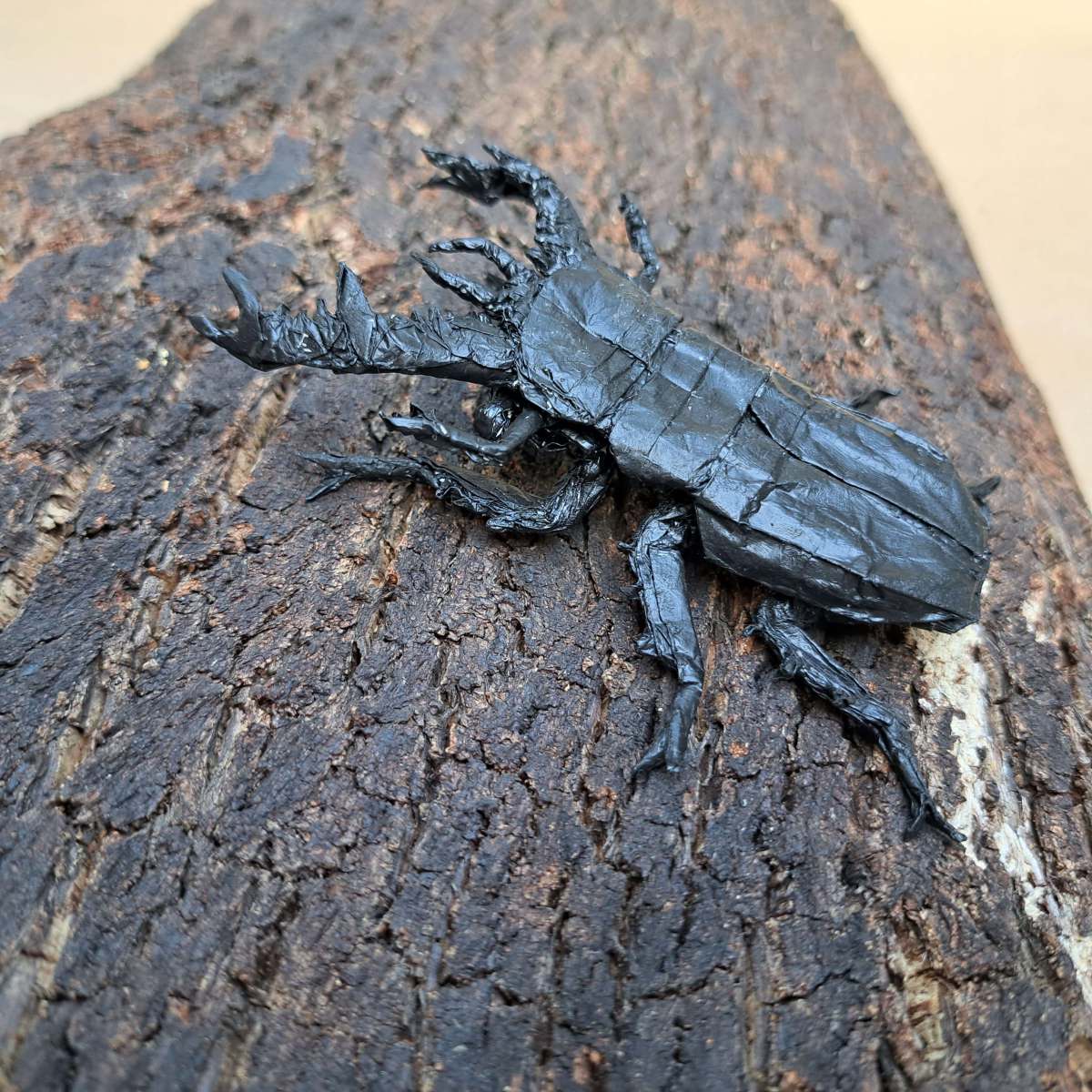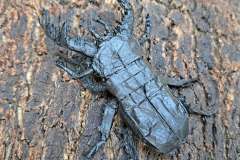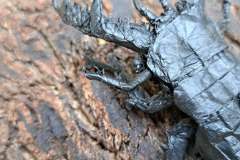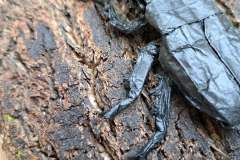This stag beetle is not really an original design of mine, but rather a “translation” of
Kota Imai´s Lucanus Cervus Judaicus into Hexpleating.
The development
Initially, I wanted to test wether it was possible to find a more efficient crease pattern leading to the same result as Kota Imai´s design. So I tried to find one using Hexpleating. However it soon became clear to me, that I wasn´t able to make it more efficient by simply using Hexpleating. I still made the translation, it was a fantastic exercise to get more familiar with Hexpleating.
What started as an excercise, soon taught me some things:
- Using Hexpleating means much more natural freedom with angles
- This freedom can become complex quite soon…
- Pythagorean stretches are a fantastical tool, providing many possibilities for details as well as efficiency
- Hexpleating is not necessarily more efficient than Boxpleating.
You can find more on efficiency at the pages “Important factors for a (good) cp” and “Choosing a system“
Even though my translation is probably more complex than the original design, I am satisfied with it: The legs are the same length, the body is a little wider. The crease pattern can be constructed by dividing into 13ths vertically and 15ths horicontaly. On top of that, it may even contain helpful constructions for you: A construction for spikes on the legs that can be implemented relatively easily, as well as pythagorean stretches for Hexpleating.
The folding process
At first, I did not plan on actually folding this stag beetle. Why should I fold the more complex version? On the other hand, it was a technical challenge. If I succeeded, it would definitely be helpful when approaching other complex designs. So I folded it anyways. It was difficult, but I was actually surprised, how well the “translation” worked, even though some flaps (e.g. the antennae) have a different length now. Since it was already an experiment, I used it to try out shaping with MC for the first time, too. Afterwards, I coloured it with acrylic paint. In my opinion, it was a success. Starting with a 33cm square the finished model is 10cm long.








